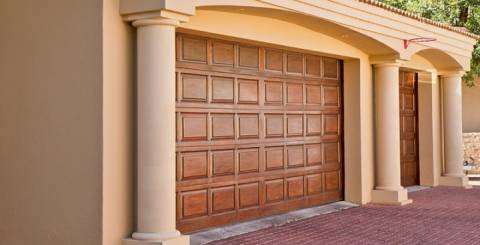Convert Your Garage Into a Living Space

A garage conversion, or turning your garage into a livable space, is considered a great choice by interior designers and one of the quickest ways of adding square footage to your home.
In addition to being one of the efficient ways that you can add perhaps a few hundred feet in square footage to your home, a garage conversion also happens to be affordable and within the scope of most peoples' current skill set.
You've probably already thought about a garage conversion already but weren't quite sure where to start or if you should take the plunge solo, right? The surprising thing is that converting your garage can add up to an incredible 10% to your home value. In terms of cost/benefit, that's excellent.
Well, considering that you're starting out with anything but a blank slate—if you have a garage on your property then you likely already have the foundation, flooring and walls that you'll need moving forward—a garage conversion can definitely be a winning idea. Here's where to start:
Take an Inventory of the Basics
Most garages will probably already be sitting on an uninsulated concrete slab, which depending on your usage might need to be modified slightly to turn your garage into a habitable, comfortable living space.
Especially when building inspectors are involved (more on that below), insulating and damp proofing your garage's existing flooring should probably be the first logistical step that most homeowners take in converting their garage.
If you want to work directly with your garage's existing concrete slab flooring, then you'll have to clean up any oil spills you find and fill in cracks with a robust patching compound before installing classy yet durable flooring options like tile or ceramic.
If you're going to be using something like timber, though, then look into things like polyethylene sheeting, damp proofing and slightly raising the floor of your garage to accommodate these changes.
Moving onto the walls, if your walls are already insulated with drywall and insulating material, then you should be good to go.
If not, consider installing drywall between the studs; spray-foam insulator can also be a serviceable complement to uninsulated drywall. Just remember to run electrical wiring before closing up the wall!
Check Your Local Regulations
The nice thing about garage renovations is that you usually don't have to get planning permission from anyone before you proceed.
Listed buildings might be an exception, and you may need to check if transitioning your standalone garage to a habitable living space will require planning permission.
If you have to file a change of use petition, you may have to ensure that things like ventilation, insulation and structural integrity all check out.
In certain areas, a building inspector might drop by and OK your plans for garage renovation and ultimately award you with a certificate of completion.
Whether or not you have to deal with a building inspector, make sure that you think through what you want the walls, flooring and ceiling to look like once you're completed. If you don’t want to do it by yourself, there are garage door installation services that you can also look into.
Assess Your Garage Door
The most seamless way to blend your garage with the rest of your home would obviously be to start with one that's already connected.
That ends up solving a ton of issues right off the bat since one of the biggest issues that homeowners face when confronting a garage conversion is what to do about a bulky garage door.
One way that some people get around this hurdle is by replacing their garage door with French doors that allow natural light to enter you're newly renovated living space and look great for when you have guests over.
Another option, and this works especially well if your garage is already connected to your home, is replacing your garage door with solid doors of your choosing or a series of windows. Casement or picture windows and/or sliding glass doors are great for garage renovations.
An infill wall is another way that you might negotiate the absence of a garage door, but just as many homeowners choose to keep their garage doors and convert their connected garage into an indoor/outdoor party space replete with couches and more of an industrial flare.
Similar Articles
Safeguard your home after storms with timely roof repairs. Detect damage early, choose durable materials, and rely on a pro for lasting protection and peace of mind.
Learn how to balance a clean home and family life with these 6 practical tips to manage clutter, involve kids in chores, and set realistic expectations.
Homeowners are increasingly drawn to farmhouse-style architecture, which creates an inviting atmosphere in their homes that prioritizes comfort and coziness over aesthetics.
Discover transformative home renovation ideas for modern living, with trends, expert tips, and sustainable, budget-friendly practices to elevate your space.
Exterior shutters can make a brick house stand out, adding personality and charm. Homeowners often wonder if installing shutters on brick is a challenge, and it’s a valid concern.
Discover how a clean and tidy home can boost your mental well-being by reducing stress, improving mood, boosting energy, and fostering relaxation.
Have you heard that spending only a quarter-hour in a hammock each day can significantly lower stress and better your mood? Research indicates that the soft swaying of a hammock can help you drift off quicker and reach a more profound sleep.
Choosing the right garage door material can significantly affect your home's curb appeal, functionality, and long-term maintenance. With several options available, it's essential to understand the pros and cons of each material to determine what works best for your home.
Find the best local electricians with our guide—learn how to check licenses, read reviews, and get reliable referrals for top-notch service.









